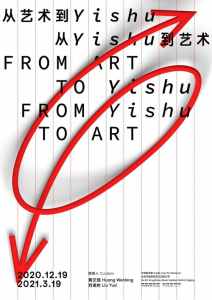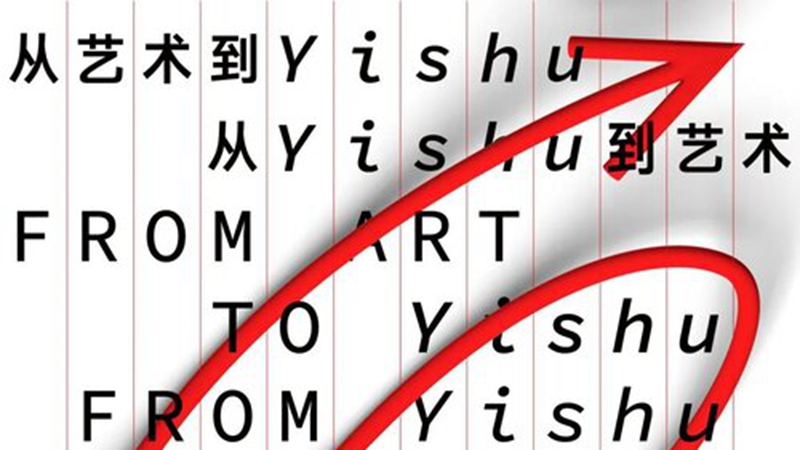
Inside-Out Practice | From Art to Yishu, From Yishu to Art
2020.12.19 —2021.3.19
Inside-Out Art Museum, No.50 Xingshikou Road, Haidian District, Beijing
Curators: Huang Wenlong, Liu Yusi
Beijing Inside-Out Art Museum considers publishing as an act of creativity, and its “Inside-Out Practice” program aims to present pioneering and visionary practices in art publishing. The eighth episode of “Inside-Out Practice” focuses on Yishu: Journal of Contemporary Chinese Art. Since 2000, contemporary Chinese art has entered a path of accelerated globalization. At the same time, the art world as a whole has become increasingly open. Yishujournal was established in 2002 with a focus on producing and leading discourses on Chinese art for an English-speaking audience; it has now been in print for nearly 20 years. Yishu is edited in Vancouver, Canada, and it is published under the sponsorship of President Katy Hsiu Chih Chien of Art & Collection Group Ltd. in Taiwan and is distributed internationally. Yishu is the premier journal in the English-speaking world devoted to contemporary Chinese art and culture.
Yishu is a manifestation of cultural pluralism. The Founding Managing Editor of the journal, Zheng Shengtian, is a Chinese-Canadian artist and scholar who has resided in Vancouver since 1990. He has been a leading figure in promoting Chinese and overseas Chinese artists across the world, and especially in North America. Chinese-Canadian artist Ken Lum served asYishu’s Founding Editor-in-Chief from its inauguration until 2004. Thereafter, Canadian curator and art writer Keith Wallace took over as Editor-in-Chief until 2020. Although the journal is an English publication, an identifying characteristic of Yishu is its slender format; the publication is designed along the standards of traditional Chinese thread-bound books. The title of the journal, yishu, is taken from the pinyin of the two Chinese characters for art. This title demonstrates the journal’s commitment to art in a Chinese context as well as how the word “art” in English cannot be completely equivalent to the Chinese term for art. Yishu serves as a significant bridge between Chinese art practitioners and the English-speaking world. Contributors to the journal include long-term foreign observers and scholars of Chinese and overseas Chinese art, Chinese artists and scholars living abroad, and Chinese artists, critics, and curators residing in China and Asia.
Issues of Yishu are approximately 120 pages and include six to twenty-one articles, unrestricted in length. After 2008, the journal transitioned from being published quarterly to being published bi-monthly. Thus far, nearly a thousand articles have been published, with the total number of characters dedicated to commenting on contemporary Chinese art numbering over one million. Articles in the journal have included in-depth scholarly articles on Chinese art, interviews with artists, curators, and historians, the results of important academic research, and up-to-date coverage of recent exhibitions, books, and art scenes etc. All of these works have served as a record of the Chinese art world in the past twenty years. Yishu has become a community with more than a thousand contributors and featured practitioners as well as the countless, enthusiastic readers of the journal around the world. Since 2011, Yishu has published thirteen Chinese-language editions of selected works, of which Carol Yinghua Lu was the Editor-in-Chief. The journal also has given the Yishu Awards for Critical Writing on Contemporary Chinese Art annually in order to encourage critical thinking and writing.
In November of 2020, Yishu published its 100th edition, marking a milestone in the history of the journal. On this occasion, “Inside-Out Practice” presentsFrom Art to Yishu, From Yishu to Art, a retrospective of the publishing history of one hundred issues of Yishu. From the abstract and all-encompassing concept of “art,” to the practical work of the journal’s viewpoints, editing, writing, and publishing, all of these specific aspects of the journal have enriched our understanding of art. At the same time, we have studied the person at the heart of Yishu, Zheng Shengtian, and his history with the journal. Zheng travelled outside China in the 1980s when the country had gradually opened up and the Chinese art scene became more vigorous, he thus held an open and tolerant attitude towards the Chinese and global art worlds. He has brought his artistic and historical vision to Yishu, endowing it with the deep cultural accumulation, democratic pluralism, and grounded character that the journal possesses today.
In the space of “Inside-Out Practice,” we present the entirety of the hundred issues of the journal as well as World Art News and Chinese Art Newsletter, two newspapers that Zheng was involved with prior to Yishu, revealing the multi-dimensional process that takes us from art to Yishu and back again. We will organize lectures with the editors and writers behind Yishu, and update our gallery presentation with documentations from these public programs.
Walkthrough | Press

